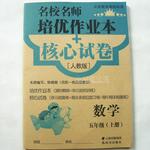题目内容
--Do you know our town at all? --No, this is the first time I ______here.
A. was B. have been
C. came D. am coming
B
【解析】
试题分析:考查固定句型。句意:--你了解我们的城市吗?--不了解,这是我第一次来这儿。This is the first/second/third/... time that sb. have/has done sth.这是某人第几次做某事,从句用现在完成时还是过去完成时,需要根据主句用的是is还是was,故选B。
考点:考查固定句型

练习册系列答案
 小博士期末闯关100分系列答案
小博士期末闯关100分系列答案 名校名师培优作业本加核心试卷系列答案
名校名师培优作业本加核心试卷系列答案
相关题目